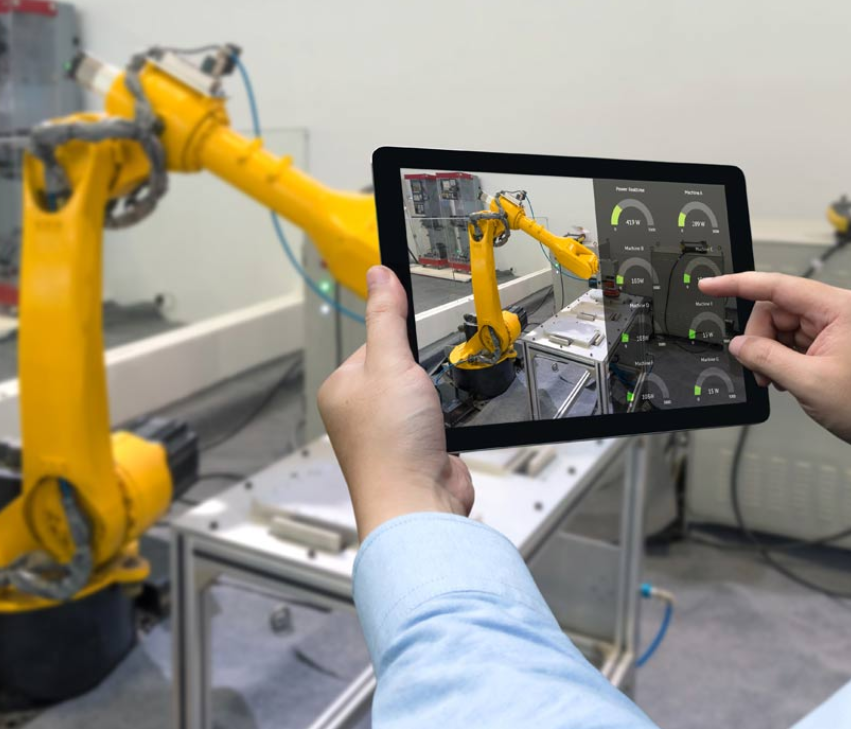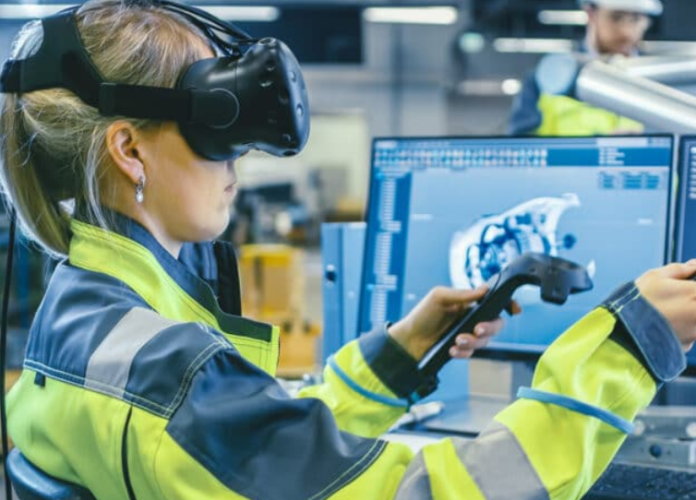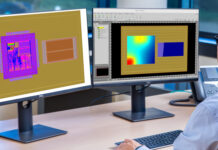The manufacturing sector today is being driven by rapid advancements in sophisticated technology. Among the most significant contributors to this modernization are Digital Twins, 3D AI, robotics automation, and immersive reality technologies. These innovations are not merely enhancing traditional manufacturing processes but are fundamentally altering how industries approach production, quality control, and overall operational efficiency.
Digital Twins: Bridging the Physical and Digital Worlds
Digital Twins technology has emerged as a game-changer, providing manufacturers with a virtual replica of physical assets, systems, or processes. This technology allows for real-time monitoring, simulation, and optimization of manufacturing operations, leading to significant improvements in efficiency and productivity.
In the automotive industry, for instance, Digital Twins enable manufacturers to simulate the entire production process, from design to assembly. By creating a digital counterpart of a car, engineers can test different design iterations and manufacturing processes without the need for physical prototypes. This not only accelerates the development cycle but also reduces costs and material waste.
Similarly, in the aerospace sector, Digital Twins are used to monitor the health of aircraft components. Sensors embedded in the physical parts send real-time data to their digital counterparts, allowing for predictive maintenance and reducing the risk of unexpected failures. This technology ensures higher safety standards and prolonged lifespan of critical components.
3D AI: Revolutionizing Design and Production
3D AI, which combines three-dimensional modeling with artificial intelligence, is another pivotal technology reshaping manufacturing. This convergence allows for the creation of highly detailed and accurate 3D models, which can be analyzed and optimized using AI algorithms.
In the medical device industry, 3D AI is revolutionizing the design and production of prosthetics and implants. By using AI to analyze patient-specific data, manufacturers can create custom-fitted devices that offer better performance and comfort. This personalized approach not only improves patient outcomes but also streamlines the production process.
The retail industry is also benefiting from 3D AI. Virtual try-ons powered by this technology allow designers to visualize how garments will fit on different body types, reducing the need for physical samples and fittings. This not only speeds up the design process but also makes it more sustainable by minimizing fabric waste.

Robotics Automation: Enhancing Efficiency and Precision
Robotics automation has been a cornerstone of manufacturing for decades, but recent advancements are taking it to new levels. Modern robots are more intelligent, flexible, and capable of performing complex tasks with greater precision.
In the electronics industry, for example, the production of circuit boards involves intricate and delicate processes. Advanced robotics automation systems can handle these tasks with high accuracy and consistency, reducing the likelihood of defects and increasing throughput. Furthermore, collaborative robots, or cobots, are working alongside human operators, enhancing productivity and safety on the factory floor.
The food and beverage industry is also witnessing a surge in robotics automation. Robots are being used for tasks such as packaging, sorting, and quality control. These machines can operate at high speeds and with remarkable precision, ensuring that products meet stringent quality standards. Moreover, robotics automation helps in maintaining hygiene and safety standards, which are critical in this industry.
Immersive Reality Tech: Transforming Training and Maintenance
Immersive reality technologies, including virtual reality (VR) and augmented reality (AR), are offering new ways for manufacturers to train employees, conduct maintenance, and enhance overall operational efficiency.
In the heavy machinery industry, VR is being used to train operators and maintenance personnel. By simulating real-world scenarios in a virtual environment, workers can gain hands-on experience without the risks associated with on-the-job training. This not only improves skill levels but also reduces the likelihood of accidents and equipment damage.
AR is playing a crucial role in maintenance and repair operations across various manufacturing sectors. For instance, in the oil and gas industry, AR headsets provide technicians with real-time information and guidance, overlaying digital instructions onto physical equipment. This enables faster and more accurate repairs, minimizing downtime and operational disruptions.
Synergy of Technologies: The Smart Factory of the Future
The true potential of these technologies is realized when they converge to create a smart factory ecosystem. In such an environment, Digital Twins, 3D AI, robotics automation, and immersive reality tech work in unison, enabling a seamless flow of data and operations.
Consider a smart factory in the automotive sector. Digital Twins provide a virtual replica of the entire production line, 3D AI optimizes the design of car components, robotics automation ensures precise and efficient assembly, and AR assists maintenance teams with real-time information. The result is a highly efficient, flexible, and resilient manufacturing operation capable of quickly adapting to changing market demands.
The integration of Digital Twins, 3D AI, robotics automation, and immersive reality technologies is modernizing manufacturing across various industries. These advancements are driving significant improvements in efficiency, precision, and sustainability, while also enhancing safety and operational flexibility. As these technologies continue to evolve, they will undoubtedly unlock new possibilities and further transform the manufacturing landscape, paving the way for a future where smart factories are the norm and innovation is the key to competitiveness. The manufacturers who embrace these technologies today will be the leaders of tomorrow, setting new standards for excellence in industrial operations.

About The Author: Dijam Panigrahi is Co-founder and COO of GridRaster Inc., a leading provider of cloud-based AR/VR platforms that power compelling high-quality AR/VR digital twin experiences on mobile devices for enterprises. For more information, please visit www.gridraster.com.






